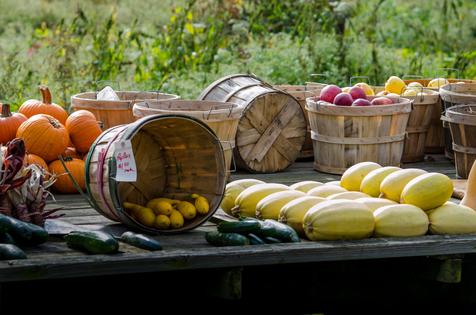Environmental Nutrition: The quintessential quince
Quince is a nutritious, tasty favorite that Americans are just beginning to appreciate.
The folklore
It may take more than a quick glance to identify a quince. Yellow-gold, roundish-oblong, this fruit seems a lumpy indecision between an apple and a pear. Yet, its history is far more decisive. The quince is thought to predate the apple, making it possibly the fruit that tempted Eve in the Garden of Eden and the "golden apple" given to Aphrodite by Paris, an act that would ultimately lead to the Trojan War. Ancient Greek writings about quince date back to 600 B.C. when it was part of wedding ceremonies as a symbol of love and fertility. This native to the Middle East continues to be revered there and in Europe.
The facts
Quince (Cydonia oblonga) is part of the Rosaceae family, which includes apples, peaches, and almonds. Hard, and astringent, only a few cultivars are eaten raw. When cooked, it sweetens and turns a beautiful pinkish-red. High in pectin, quince is a natural in jams and jellies. One quince packs 23 percent DV (Daily Value, based on 2,000 calories/day) of vitamin C, a healthy dose of satiating fiber, and many health-promoting chemicals, including catechins, known for disease-fighting properties.
The findings
A total of 26 plant compounds were identified in 13 varieties of quince, according to a laboratory study published in the Journal of Agricultural and Food Chemistry (2013). The largest group of compounds was flavanols, with benefits like a reduced risk of cancer, heart disease and stroke. Evidence shows the potential of dietary flavonoids in the prevention of prostate cancer (Experimental Oncology, 2017). Quince peel extract also has anti-inflammatory effects that may help prevent and improve the treatment of inflammatory diseases like rheumatoid arthritis and atherosclerosis (Biochemical and Biophysical Research Communications, 2012).
The finer points
Fall is harvest time for quince. Fresh, ripe quince should have golden yellow skin that's free of bruises or wrinkles and have a pleasant fragrance. Handle carefully, they bruise easily. Store at room temperature up to a week or refrigerated up to three weeks. Some varieties may be enjoyed raw -- just slice and core. But add a little heat, and encounter its softer, sweeter side. Use cooked quince as you would apples, pears, or stone fruits -- pureed into sauce, sliced into compotes, tarts, and pies. Pair with other fruits for a fresh, delicious twist. Try quince with savory proteins, roasted or in a stew for the perfect balance of savory and sweet.
(Environmental Nutrition is the award-winning independent newsletter written by nutrition experts dedicated to providing readers up-to-date, accurate information about health and nutrition in clear, concise English. For more information, visit www.environmentalnutrition.com.)







